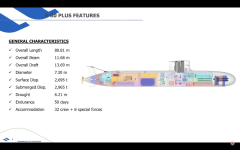I don't know if I buy into this explanation.
The border infrastructure drive we began after 2014 (which we ramped up after Doklam & even more after Galwan) is far more threatening to the Chinese than any conventional platform we can buy. Because that infrastructure represents an ability to induct forces, take & hold territory. In fact it can be argued that this build-out is what is causing the Chinese to get increasingly jittery, and as a consequence speed up their own build-out.
And speaking of conventional inductions, it's not the 36 Rafales (of which only 18 are LAC-facing) that have the Chinese worried, rather it's the 73 Tejas Mk-1A we ordered in 2021. It's these large numbers of AESA-equipped fighters that threaten to change the entire equation of Air Defence on the LAC.
If you want to say Tejas is a 'defensive' asset because it doesn't have long legs, fine...but then we have also brought the concept of Rocket Forces to the fore. Development of a new-generation SRBM like Pralay which was in cold storage for a long time, was greenlit only after Doklam & is now in full swing. There's no way that isn't an offensive weapon.
It is true however, that we definitely took a good hard look at our PRIORITIES and decided to spend our Capex accordingly. Because offensive or defensive, all systems cost money that we need to take out of the same pocket. I would say the drying up of orders of flashy, big-ticket foreign aircraft is a result of that prioritization, not a need to placate the CCP.
E.g. there's no point in having an aircraft that can perform DPS if your ground forces lack the infrastructure to actually go and hold the territory gained by those DP strikes, and keep their lines resupplied while doing so.
In terms of both infra and combat capabilities, everything we have today or are planning to develop over the next few years are about maintaining a defensive-offense posture all across the border.
And we are developing infrastructure in phases. So this year or early next year, we will have parity and/or superiority over the Chinese in many areas. This already has a massive multiplier effect for our logistics at the border.
So there's this one:

en.wikipedia.org
Being built at war-footing.
And this one:

en.wikipedia.org
Most of it has been built, but will now be built further to connect to forward areas along the border. It wasn't done before to placate China, but now we gotta complete it.
And then we have this:

en.wikipedia.org

Of course, the routemap of the Frontier Highway will be much more than just what's been shown.
They claim all of these will be done by 2027, but realistically it's gonna be 2030. Once these road networks are ready, by then this will be mostly ready too:

en.wikipedia.org

You can see the redundancy close to the hotspots, Delhi and WB. And these lines will naturally connect to other local railway lines up to the border.
And then, finally, there's this:

en.wikipedia.org
The Sagarmala Programme has identified connectivity between ports and domestic production and consumption centers through rail, road, pipeline, MMLP under the dedicated pillar of port connectivity, consisting of 279 projects of total worth ₹206,363 lakh crore which are being undertaken by various implementing agencies. Out of these, 83 projects worth ₹43,300 crores have been completed and 66 projects worth ₹79,600 crores have been awarded and are under implementation. Remaining, 130 projects worth ₹83,400 crores are under development.

Focus on the blue line in the NE.
Another interesting water link.

Which is a part of this:
The National Perspective Plan (NPP) was prepared by the then Ministry of Irrigation (now Ministry of

pib.gov.in
What we have today is enough to fight at the border. But what we will get around 2027-30, up to 2035, will be enough to launch an invasion into Tibet.
With that in mind, LCAs meet the threshold of what's necessary for the defensive-offense posture. But with all the changes we have made on the ground, possessing 200 Rafales will easily push us into the offensive posture. And this can very, very easily change our dynamics with China, and push us into something unaffordable.
The thing is we need everything to be ready at the same time. With 200 Rafales, only the IAF will be ready. But the IA needs to reorganize and modernize, and the IN needs next gen ships and subs too, including SSNs. And the entire country needs this infrastructure built before a shooting war begins. And this includes energy self-sufficiency via renewables.
Everything we need is aimed for a 2030+ delivery, and this is not just infra and military hardware, there's a lot of work going on behind the scenes for electronic infrastructure. For example, the IAF is currently working on a massive network that connects all armed forces. ISRO is preparing to launch dozens of satellites for the IAF over the next 5 years. So, post 2030, whatever we buy, be it aircraft, ships or ground units, vehicles and personnel, they will all be seamlessly integrated for communication and coordination.
We follow a different philosophy from others and this is a simple graph explaining that.

So we are preparing accordingly.


















